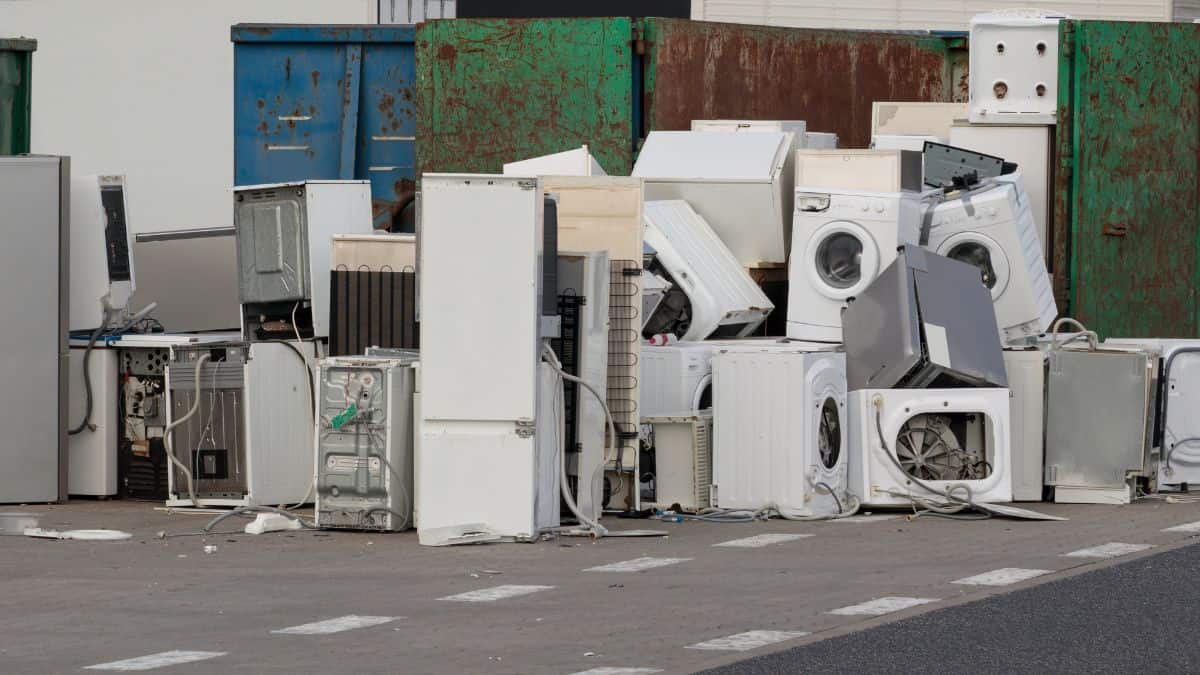1. Collection and Transportation
The first step in recycling old appliances is their collection and transportation to a recycling facility. Many cities offer curbside pickup or dedicated drop-off locations for large items like refrigerators, washing machines, and microwaves. Specialized recycling services may also handle the transportation of appliances, ensuring that they are safely delivered to the right facility.
2. Inspection and Sorting
Once the appliances arrive at the recycling facility, they are inspected and sorted by type. Appliances that contain harmful substances, like refrigerators and air conditioners, are treated with extra care due to the chemicals and coolants they contain. Sorting helps streamline the recycling process and ensures that different types of materials can be processed in the most efficient way.
3. Removal of Hazardous Materials
Many old appliances contain hazardous materials such as refrigerants (like CFCs), mercury, or oils that must be handled properly. For example:
- Refrigerators and air conditioners contain refrigerants that need to be safely removed to prevent them from leaking into the atmosphere, where they can damage the ozone layer.
- Mercury switches and relays, often found in older appliances, are carefully removed and sent to specialized facilities that handle toxic materials.
- Oils and other fluids are drained from machines like washers and dryers to prevent contamination during the recycling process.
4. Dismantling
After hazardous materials are removed, the appliance is dismantled. Components like motors, compressors, electronic circuits, and wiring are removed for further processing. This is done manually or with the help of machinery, depending on the size and complexity of the appliance. By breaking down the appliance into its parts, recyclers can recover materials like metals, plastics, and glass.
5. Shredding and Crushing
The next step involves shredding or crushing the appliance’s remaining structure. Large machines are used to shred the metal parts into smaller pieces, making it easier to separate the materials by type. For example, metals are shredded for reuse, and plastics are ground down to make new plastic products.
6. Material Separation
Once the appliance is dismantled and shredded, the materials are separated. This can include:
- Ferrous metals (like steel) are separated using magnetic fields.
- Non-ferrous metals (like copper, aluminum, and brass) are separated using various techniques such as eddy current separation.
- Plastics and other materials are sorted through flotation or other mechanical processes.
7. Recycling and Reuse
After the materials are separated, they are sent to different industries for reuse:
- Metals are often melted down and used to make new products, reducing the need for raw material extraction.
- Plastics are repurposed for new consumer goods or construction materials.
- Glass from items like oven doors or refrigerator shelves is reused in new glass products.
8. Safe Disposal of Non-Recyclable Parts
Not all parts of an appliance can be recycled. Materials like certain kinds of foam insulation or old adhesives may be disposed of in an environmentally responsible way, ensuring they don’t end up harming the environment.
9. Environmental Benefits
Recycling old appliances helps reduce the demand for raw materials like iron ore, aluminum, and copper, which require significant energy and resources to mine. Additionally, by properly handling hazardous materials and ensuring that they don’t end up in landfills, recycling prevents soil and water contamination and reduces greenhouse gas emissions.
10. Creating a Circular Economy
The process of recycling old appliances plays a vital role in the circular economy, where products and materials are kept in use for as long as possible. By recycling appliances, valuable materials are kept within the production cycle, contributing to sustainability efforts and reducing waste.
In summary, old appliances are recycled through a meticulous process that involves collection, dismantling, material separation, and the safe disposal of hazardous materials. This not only helps conserve natural resources but also reduces the environmental impact associated with appliance disposal.
